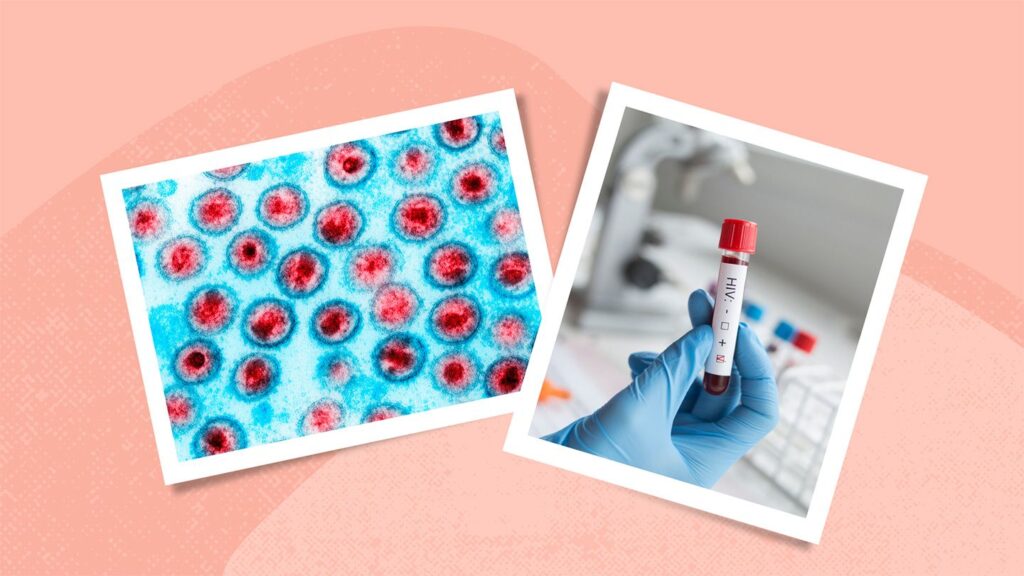Dilation and curettage (D&C) may be used to clear the uterine lining following a miscarriage or abortion. It can also help diagnose certain health conditions, such as uterine cancer or polyps.
Overview Overview What Is Dilation and Curettage? Dilation and curettage (pronounced cure-eh-TAJ), also called D&C, is a procedure that removes tissue from the uterus in order to treat or diagnose a condition. According to research, D&C is one of the most commonly performed invasive procedures in the United States.e60dc2a1-f33c-4a05-9b50-8e3e8e597629c2313ece-0855-4e32-ae45-03fb480ee10e During a D&C, the cervix is dilated, or widened, using an instrument or medication. Then, a suction tube or spoon-shaped instrument, called a curette, removes tissue from the uterine lining via scraping or suction.e60dc2a1-f33c-4a05-9b50-8e3e8e597629bedfc76b-e4e4-40ad-bf77-e2c9058cc0f3
Why Is Dilation and Curettage Done? Why It’s Done A D&C may be performed to diagnose or treat a uterine condition, including:e60dc2a1-f33c-4a05-9b50-8e3e8e59762915728e55-66de-4248-bd39-da0e61619661 Abnormal bleeding, or bleeding after menopause Uterine fibroids Uterine polyps Hormone imbalances Uterine cancer In pregnancy-related cases, a D&C may be used to:e60dc2a1-f33c-4a05-9b50-8e3e8e597629158c0862-3ea0-47ec-8262-622480d92200 Terminate a pregnancy Remove conception products that remain in the body Evaluate placental tissues, if the pregnancy is in an unknown location Remove a molar pregnancy, which causes a tumor to form instead of a normal pregnancye60dc2a1-f33c-4a05-9b50-8e3e8e597629e01e5c29-18eb-49a3-bf40-1c6ca0852cd1 Prevent infection or heavy bleeding by clearing out any tissue that remains in the uterus after a miscarriage or abortione60dc2a1-f33c-4a05-9b50-8e3e8e5976299df45b99-219f-440a-9fb8-b09b40377166 Treat excessive bleeding after giving birth by clearing out parts of the placenta that remain in the uteruse60dc2a1-f33c-4a05-9b50-8e3e8e597629e01e5c29-18eb-49a3-bf40-1c6ca0852cd1 A D&C, which occurs in about 50 percent of miscarriages, can help prevent bleeding and infections.e60dc2a1-f33c-4a05-9b50-8e3e8e59762915728e55-66de-4248-bd39-da0e61619661
How Is Dilation and Curettage Performed? How It’s Performed A D&C is usually performed by a gynecologist or obstetrician. It can be done at a doctor’s office, outpatient care center, or hospital.e60dc2a1-f33c-4a05-9b50-8e3e8e5976294a732f7f-5bf7-4218-adee-b5e4127620f5 Depending on your medical history and reason for the procedure, you may be awake or sedated with anesthesia .e60dc2a1-f33c-4a05-9b50-8e3e8e5976294a732f7f-5bf7-4218-adee-b5e4127620f5 After the anesthesia takes effect, a doctor will insert a device called a speculum into the vagina , which helps dilate the cervix. Thin rods, or dilators, are used to expand the cervix to the appropriate width.e60dc2a1-f33c-4a05-9b50-8e3e8e5976294a732f7f-5bf7-4218-adee-b5e4127620f5 Then, a curette (sharp instrument) or suction device is used to scrape tissue from the uterine lining.e60dc2a1-f33c-4a05-9b50-8e3e8e5976294a732f7f-5bf7-4218-adee-b5e4127620f5
How Do I Prepare for Dilation and Curettage? How to Prepare It’s important to follow your healthcare provider’s instructions prior to having a D&C. If they plan to administer general anesthesia, they may ask you not to drink or eat for several hours before the procedure.e60dc2a1-f33c-4a05-9b50-8e3e8e597629235bdba1-49f9-47a5-ab64-617f279b68ed Sometimes, your cervix may need to be dilated or softened a few hours or a day before surgery. To start the dilation process, your doctor may prescribe a medication or insert a thin rod into your cervix.e60dc2a1-f33c-4a05-9b50-8e3e8e597629235bdba1-49f9-47a5-ab64-617f279b68ed Pre-D&C cervical dilation is typically done in cases of pregnancy termination or when a hysteroscopy will be performed during the D&C.e60dc2a1-f33c-4a05-9b50-8e3e8e597629235bdba1-49f9-47a5-ab64-617f279b68ed In a hysteroscopy , a doctor uses a thin instrument with a camera at the end to visualize the uterus. This helps them spot any potential abnormalities, and they can also remove uterine polyps or fibroids during this procedure.e60dc2a1-f33c-4a05-9b50-8e3e8e597629235bdba1-49f9-47a5-ab64-617f279b68ed
What Should I Expect During Dilation and Curettage? What to Expect During a D&C, you’ll receive one or more types of anesthesia to eliminate pain and discomfort:e60dc2a1-f33c-4a05-9b50-8e3e8e5976297ab51164-d3c7-44b7-a342-ced760233e74 General anesthesia puts you to sleep. Regional anesthesia numbs you from the waist down. Local anesthesia only numbs the cervix. Here’s what to expect during the procedure:e60dc2a1-f33c-4a05-9b50-8e3e8e597629ea4074ab-0213-4515-ad60-3c4d1f7e6cf1 You’ll lie on your back with your heels in stirrups while your doctor inserts an instrument (speculum) into your vagina. This helps them see into the cervix. Your doctor will slowly dilate the cervix using rods. The rods will start small, and then gradually increase in diameter. This helps dilate the cervix. Once the cervix is dilated enough, your doctor will remove the rods and insert a spoon-shaped instrument (curette) to remove uterine tissue. A curette may be sharp, or it may be a suction device. A D&C typically takes 10 to 15 minutes, but you may need to stay longer for monitoring.e60dc2a1-f33c-4a05-9b50-8e3e8e5976292a0846bb-286e-4070-9ef0-121bc0cc14f8
What Are the Potential Risks Associated With Dilation and Curettage? Risks A D&C is usually a safe procedure, but there are some risks, including:e60dc2a1-f33c-4a05-9b50-8e3e8e59762906727702-b8fe-464b-981e-d499c45cfc5a Perforation of the uterus: This happens more often in patients after menopause or pregnancy. Development of scar tissue inside the uterus: This is called Asherman’s syndrome, which is rare. Scarring can lead to infertility, future miscarriages, or abnormal, absent, or painful menstrual cycles. Injury of the cervix: If damage occurs, pressure, medication, or stitches can help stop the bleeding. Infection: This is rare, occurring in about 1 to 2 percent of D&C cases.e60dc2a1-f33c-4a05-9b50-8e3e8e5976292632ef70-386f-4328-8842-71ebca445eeb Bleeding: This is especially rare if a D&C is performed for reasons unrelated to pregnancy.e60dc2a1-f33c-4a05-9b50-8e3e8e5976292632ef70-386f-4328-8842-71ebca445eeb The risk of death from a D&C is extremely small.e60dc2a1-f33c-4a05-9b50-8e3e8e5976292632ef70-386f-4328-8842-71ebca445eeb
What Type of Care Is Needed Following Dilation and Curettage? Follow-Up Care After the procedure, you may have to stay in the recovery room for several hours to make sure you’re not bleeding heavily or experiencing other complications. You’ll also need to wait for the anesthesia to wear off.e60dc2a1-f33c-4a05-9b50-8e3e8e59762956219bfa-f326-4553-9d83-200d71cbe184 Here’s what to expect after you go home:e60dc2a1-f33c-4a05-9b50-8e3e8e597629721323c5-feec-45f5-97d0-651ff7429e38 You may experience spotting or bleeding for a couple days. You can take ibuprofen (Advil, Motrin) for pain or discomfort. Your next period may be early or late, as it takes time for a new uterine lining to form. Don’t insert anything into your vagina. This helps prevent infection.e60dc2a1-f33c-4a05-9b50-8e3e8e59762956219bfa-f326-4553-9d83-200d71cbe184 Ask your doctor when you can have sex or use tampons. Full recovery may take a couple of weeks. However, you should be able to get back to most of your normal activities within one to two days of surgery.e60dc2a1-f33c-4a05-9b50-8e3e8e597629721323c5-feec-45f5-97d0-651ff7429e38
What Are the Possible Complications and Side Effects of Dilation and Curettage? Complications Side effects of a D&C typically include mild cramping, spotting, or light bleeding.e60dc2a1-f33c-4a05-9b50-8e3e8e597629fef6af01-7a56-4f73-8d26-bb5872bd6fdd If you experience any of the following after a D&C, contact your doctor immediately:e60dc2a1-f33c-4a05-9b50-8e3e8e597629fef6af01-7a56-4f73-8d26-bb5872bd6fdd Heavy bleeding that requires changing pads every hour Cramping that lasts longer than two days Severe crampse60dc2a1-f33c-4a05-9b50-8e3e8e59762979e8f296-9c5d-4efe-802f-3346463404c3 Fever higher than 100.4 degrees F Pain that worsens Vaginal discharge that smells foul Large blood clotse60dc2a1-f33c-4a05-9b50-8e3e8e59762979e8f296-9c5d-4efe-802f-3346463404c3 Dizziness Faintinge60dc2a1-f33c-4a05-9b50-8e3e8e597629999e9d3d-da39-4b77-9bf9-4f5fcc3acaba
What’s Next To help ease cramping, your doctor may recommend taking ibuprofen or another medication. They may also prescribe an antibiotic to help prevent an infection.e60dc2a1-f33c-4a05-9b50-8e3e8e597629625103ec-fc22-4906-b00c-39151aa394b2 As you recover, it’s important to avoid inserting anything into your vagina, which includes using tampons, douching , and having sex. Your doctor will advise when it’s safe to have sex again.e60dc2a1-f33c-4a05-9b50-8e3e8e597629625103ec-fc22-4906-b00c-39151aa394b2 They’ll also let you know when it’s safe to start trying to conceive, if you had a D&C due to a miscarriage.e60dc2a1-f33c-4a05-9b50-8e3e8e597629802098ed-5a85-4ae6-ab2b-991158271fd0 After a D&C, your next period may come early or late, because the uterus needs to build a lining again.e60dc2a1-f33c-4a05-9b50-8e3e8e597629947f7abd-7865-4de3-9289-62d60bc43277 You’ll also need to make a follow-up appointment with your doctor to discuss any lab results. If you are diagnosed with a health condition, your care team will discuss the treatment options and next steps with you.e60dc2a1-f33c-4a05-9b50-8e3e8e597629947f7abd-7865-4de3-9289-62d60bc43277
The Takeaway A D&C is a surgery that removes the uterine lining to treat or diagnose a condition. After a D&C, you may experience pain, spotting, or light bleeding. If you have concerns about this surgery or are experiencing prolonged symptoms, contact your doctor.
What Is Dilation and Curettage (D&C)?



